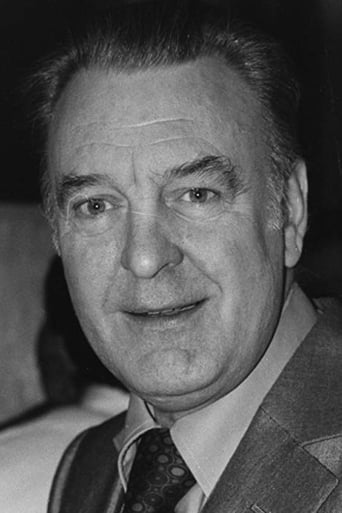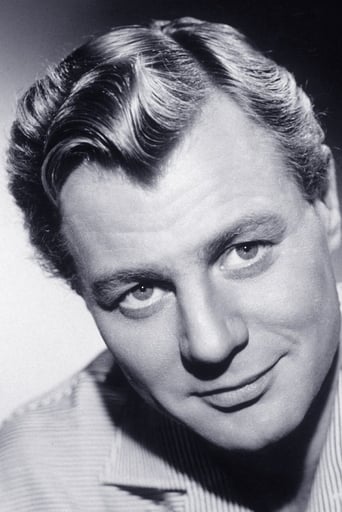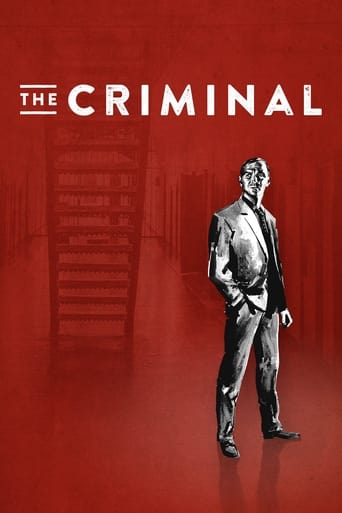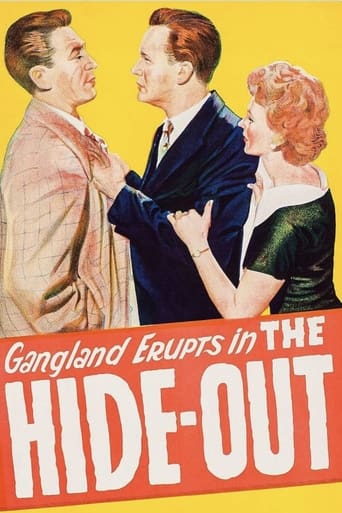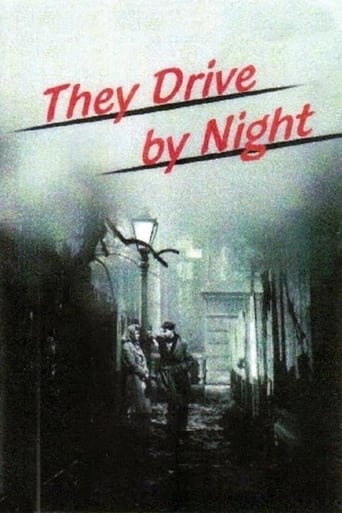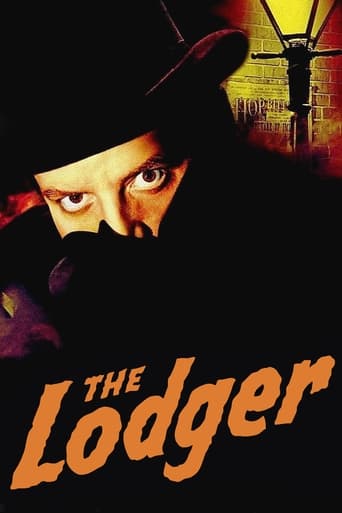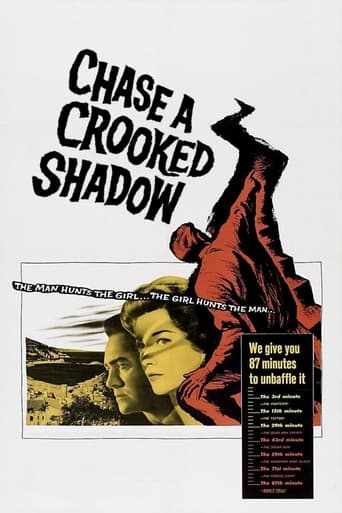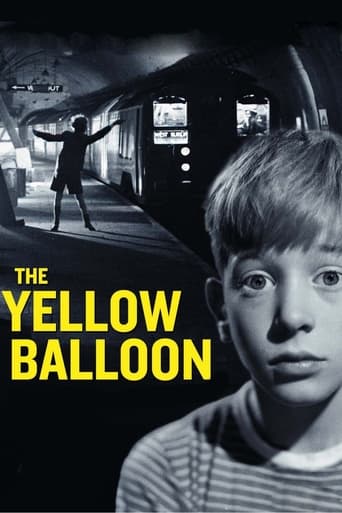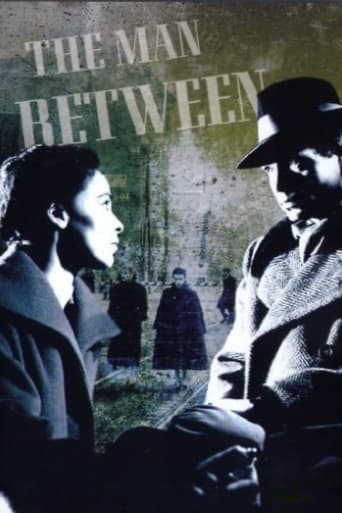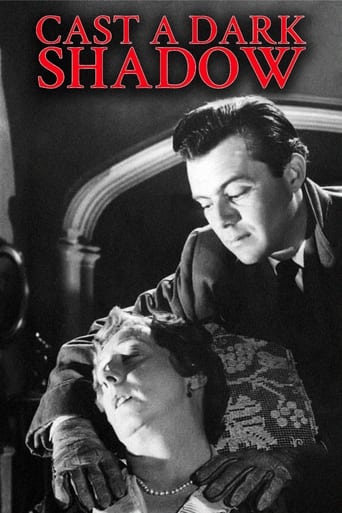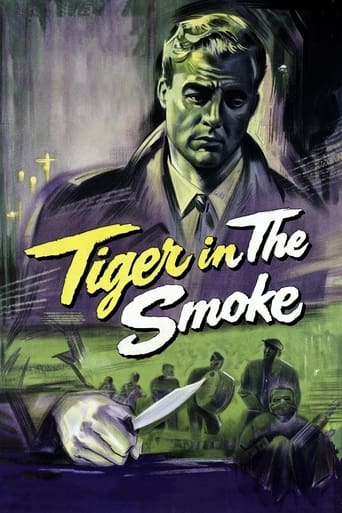
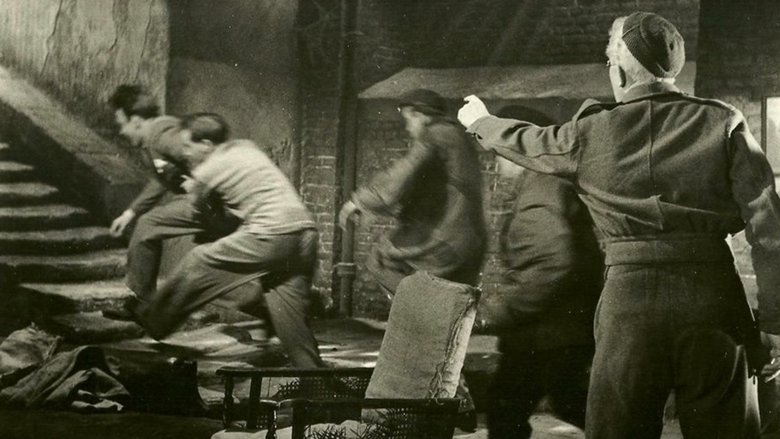
Tiger in the Smoke (1956)
In wartime, a young officer is killed during a raid to kill a German general at the house that used to belong to his grandmother. Before he dies he talks about a treasure that was hidden there. Several years later, the members of that group are still together as a street band living in a cellar. The last of the gang, who was chosen for his skills as a ruthless killer, escapes from prison in a rampage of killing and, obsessed with the treasure, takes the gang to France to recover it.
Watch Trailer
Cast
Similar titles

Reviews
Touches You
So much average
Excellent but underrated film
it is finally so absorbing because it plays like a lyrical road odyssey that’s also a detective story.
A young war widow has gone on with her life, falling in love with an attractive man. Strangely, she begins to receive disquieting messages that suggest her husband might be still alive. Who would want to perpetrate such a cruel hoax on a blameless citizen ? And why ?This is a thriller with an enormously original intrigue - as it should be, since it is based on Margery Allingham's marvelously clever and inventive novel of the same name. The movie is at its evocative best when describing a London shrouded in an oppressive smog. It's a world turned dark and grey, where vast blankets of polluted fog fill the streets, to the point where people can't find their houses and dogs can't recognize their masters. Every now and then one can catch a glimpse of some disquieting scene, such as a group of raddled, unhinged veterans moving serpent-like towards ever grimmer destinations. ("Tiger", by the way, is to be commended for its bravery in describing the long-term human cost of war. It's easy for authorities and politicians to say "John Smith survived the war and re- entered civil life", but what if John Smith, upon his return, discovered that he had lost his job, neighborhood and family ? Or what if the horrors of war had coarsened and unhinged him so badly that he became a danger to himself and to others ?) The smog, of course, isn't just an environment in which wicked things happen : as an air pollution problem verging on a disaster it is a wicked thing itself, looking for babes and innocents to devour. Still, I'm not entirely sure that "Tiger" succeeds in capturing the tone of Allingham's book, which was a skillful mix of the mundane and the grotesque. I need to add, immediately, that filming the book can't be easy : it must be as difficult as trying to bottle the elusive scent of a rare mountain flower. As a result some of the scenes fall flat or sound strangely off, such as the discussion between a kind, possibly even saintly canon and his attacker. There is also a sequence involving a hazardous and torturous climb over some rocks. Here the problem seems to be technical in nature ; it's not hard to imagine a bad-tempered crew trying to lug heavy equipment over an ungrateful surface. One can almost hear an aggrieved voice saying : "Go on, sunshine, thesp as much as you want, but stretch that leg two inches more to the left and it's bye-bye to an Astrolux-XZ-350, and it won't be me who's going to pay a thousand pounds out of his own pocket". The effect of this sequence, predictably, is less than blood-curdling.However, the movie is a useful introduction to the delightful novels of Allingham, who was one of the great Ladies of Crime. In her own way she was fully the equal of luminaries such as Agatha Christie and Dorothy Sayers.
Made at Pinewood Studios, London. The Rank Organisation presents a Leslie Parkyn Production, made with the co-operation of the City of London Police, and released in the U.K. by J. Arthur Rank Film Distributors: 17 December 1956. No New York opening. In fact, never theatrically released in the U.S.A. Australian release through British Empire Films: 21 November 1957. Sydney opening at the Victory. British length: 8,457 feet. 94 minutes. 97 minutes in Australia.SYNOPSIS: Ten years alter the death of her husband in action, Meg Elgin (Muriel Pavlow), now engaged to Geoffrey Levett (Donald Sinden), begins to receive clippings from recent magazines showing her husband at social events. (Available on an excellent ITV DVD).COMMENT: There's quite a lot I'd like to say about this marvelous film, which I regard as the best mystery/suspense thriller to come out of England. Unfortunately, my enthusiasm is not shared. I will admit that, when you stop to think about it, the tale is wildly improbable. But who's going to stop and think? I will also admit that Margery Allingham fans have a case for under-rating the movie because Pelissier's superlative script drops the aristocratic Allingham hero, Edmund Campion, right out of the proceedings altogether. But this "unkind cut" doesn't worry me. It sets me cheering. Why? I always thought Campion a bore. More importantly, the film is far too off-beat, weird and bizarre to attract the general public, yet not unconventional in a sufficiently kinky way to arouse the interest of the corduroy set. In other words, it falls between quite a number of stools, — and that's one of the minor reasons I rate it so highly. My major thought when I think about Tiger in the Smoke is its atmosphere. Really quite unique. A blend of The Hunchback of Notre Dame with The Dark Eyes of London. So relentlessly gripping that when the mysterious killer is finally uncovered, his less than psychotic motive comes almost as an anticlimax.Atmosphere is created and achieved through the ingenious collaboration of highly inventive direction, startlingly imaginative cinematography, creatively dynamic, isolated yet claustrophobic sets, and a music score combining stark dissonance with hideously haunting, superficially melodious, popular claptrap. All four of these gentlemen — Roy Ward Baker, Geoffrey Unsworth, Jack Maxsted, Malcolm Arnold — should take a bow from their brilliant work here (which far surpasses all their other achievements, — some of them quite notable). But were they nominated for any awards? Of course not!The picture's technical achievements are so compulsively engrossing, the acting comes almost as an afterthought. Yet here too, the viewer confronts distinctions in all departments. The principals — Sinden, Pavlow, Wright, and Miles — never gave more charismatic performances. The lead players — Clunes, Naismith, Rhodes, and Victor — were never more compellingly convincing; while the cameo actors, led by the fascinating Kenneth Griffith, were never more sharply precise. In short, Pelissier has done wonders with Allingham's novel. As have all the craftsmen and women who worked on the movie. "Tiger in the Smoke" emerges nothing like the usual bland Rank product at all. A genuinely frightening film, it's one of the great achievements of British cinema and certainly deserves to rank alongside "The Third Man" in the mystery/suspense field.
This film is not in any way a gripping story, in fact, it seems as one watches it, to be three films cut and compressed to make one. So, what's wrong with it? The main problem is the fact that it has too many characters, too many mediocre actors (one appallingly bad one) too many angles and not enough of a story, the denouement is positively under whelming and one is left not caring about anyone, except perhaps, the canon played beautifully by that most reliable and welcome of actors, Laurence Naismith.So why am I bothering to write about it? Because it is one of those worthwhile ventures, one of those film projects that had so much going for it on paper that it deserved to become a huge success. The directing of camera was for the most part brilliant, with many innovative techniques, some of them well ahead of the industry's time. The directing of the actors was uneven and sometimes non existent, which allowed better actors to get disorderly and the poor ones (there were a few) to go off the edge or simply flounder, the actor playing Johnny Havoc, the film's central bad guy, was simply not up to the role, and should have been recast, he indulged in "mad acting" "golden haze" and "falling on furniture" all things no actor should ever be allowed to get away with, and in his one great scene (in the cellar with his gang) he blew every opportunity the script afforded him to shine and to create great drama, as a result, the scene fell like seeds on stony ground.Having said this, the film was made with some great care and there were moments that broke all barriers for the time. The actor playing the Inspector(against type from the book)was good, and the supporting police force actors were good, Charles Victor(though very near the edge most of the time) provided a welcome uplift, and Laurence Naismith was (as usual) on top of his job. Donald Sinden had not at this time developed his hard jaw and tight teeth acting and so was quite acceptable as the new man in the life of the love interest (an actress who did so very well with what she was given, which wasn't very much) and he was handsome enough to be taken for Richard Green. This is a good film if you allow for the obvious flaws, and deserves a place alongside great works, for it's bravery and innovative techniques, as well as some of the character acting, odd bits of which, were brilliant.Dracher
During the late 1940s and the 1950s the subject of juvenile gangs and delinquency took a hold in London. The culmination of this was the creation of the image of the "Teddy Boy", who was like our delinquents - a young adult with attitude problems. In the hands of some writers it became a subject of national malaise as in the play LOOK BACK IN ANGER, with the young upset at how they were being cheated of their futures by the so-called blunders of the previous two or three generations. But in the here and now it also led to the recognition of a criminal problem: The urban youth who had nothing to do but have sex and get into trouble. A series of youthful killers in the early 1950s culminated in the Derek Bentley - Christopher Craig case, where a constable was killed, and the the actual killer could not be tried (he was too young). His mentally challenged friend, who made the mistake of shouting, "Let him have it Chris", was hanged. We still are not sure if Bentley wanted Craig to shoot or to hand the gun over to the constable. Comically the figure of the Teddy Boy was spoofed as a clumsy idiot by Peter Sellers in THE LADYKILLERS. But the really less pleasant aspect of such a type was well played by Tony Wright as Jack Havoc in this film. He is the terror of every soul in the district of London he resides in, most of whom clam up when the police try to find out who is terrorizing them, and where he is. Nobody will reveal a fact - he claims that he has all the answers - he knows how to control the world. It is not brains or cunning: He has discovered the "Science of Luck". He believes if you believe in luck you will create it for yourself. It is not until his world blows up in his face, as it did in that of his older American contemporary Cody Jarrett in WHITE HEAT, that he realizes there is a limit to such luck.Bernard Miles as his older gang lieutenant (originally the boss until Jack took over) is wonderful as a seedy type who would like to break Jack's neck but knows if something goes wrong he will be lucky to be left a cripple only. Laurence Naismith plays the decent local church canon, whose one effort to help this psychotic ends in his near murder. Donald Sinden is the local decent common man who helps bring down the local monster.It's not shown too frequently (I saw it about 1983 or so). But it was a really good little thriller well worth the watching.
